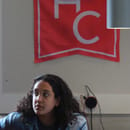I first off want to start by saying that I have unfortunately been wrapped up in the phenomenon of Starbucks. I have recognized its problems and have been trying to work towards educating myself about the things I buy/invest in. That learning starts somewhere here in this article.
Back in Spring of 2018 there was an incident where two black men were arrested and told to leave a Starbucks. They were there for a meeting and one of them was looking to use the bathroom before their meeting started. Things escalated when the barista said that he could not use the bathroom, the police were called and the men were forced to leave. Basically, two men were refused to use e restroom in Starbucks even though they were there for a meeting. The police got involved and the men had to leave. This unfair circumstance led Starbucks to close down its stores in order to go over its policies. Since this situation, Starbucks has changed and updated its policy. However, bathroom availability was very exclusive, especially in big cities. In other words, it was up to the barista to decide who could use the bathroom or not. This creates a space for judgement, profiling, and discrimination. There has also been a noticeable choice in employees that work at Starbucks. There are rarely any POC (people of color) who operate as baristas.
Racial quotas aren’t lawful but there is a specific kind of person hired for these positions over and over again, even in communities where the majority of the population is not white. Starbucks has created this sort of “white, elite workspace.” However, they expect everyone to buy their products. People from New York City, specifically the Bronx and Brooklyn said the first signs of gentrification is the appearance of Starbucks. Gentrification is when an urban area is renovated to the taste of middle to upper-class people. In other words, predominantly non-white and lower class areas are renovated and white residents move in. This becomes a problem because prices reach middle class levels, but the majority of people in that area aren’t middle class or white. POC who have lived in certain neighborhoods and apartments end up having to leave because it becomes too expensive to live. The irony is that Starbucks ends up in these areas but then makes the residents (POC/Black men) feel unsafe. Then they deem them suspicious in their own HOME community. Not to mention a percentage of their coffee is processed through free trade, which means workers (mainly POC) are being paid less than what they deserve (slave labor). This all cycles to the present race issues in the store and the unfair labor. I am not saying to never step foot into a Starbucks ever again, but to be conscious of these issues and the people that they impact. Try other coffee shops, give back to local businesses and question everything.



